ecology
Table of Contents
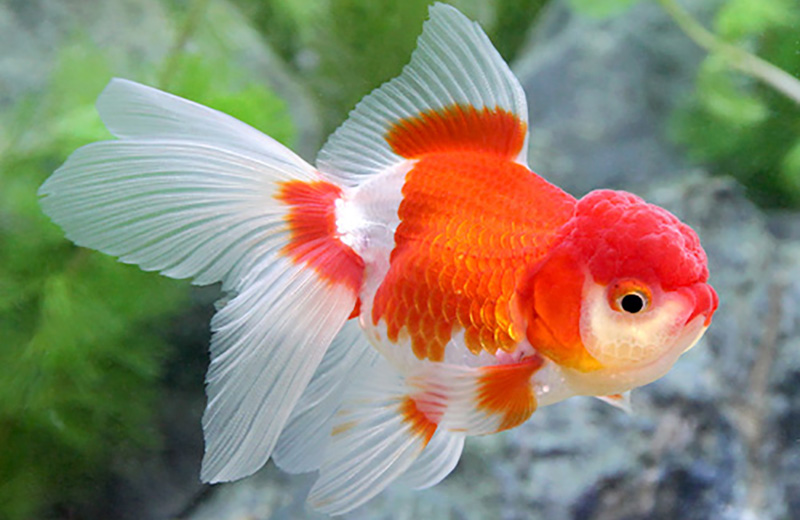
The Dutch lion's head (Dutch shishigashira) is,This goldfish has a beautiful tail fin like the Ryukin and a well-developed fleshy mass on its head. The body shape is longer than that of the Ryukin, with each fin longer, and the fleshy mass on the head becomes more rounded as it develops. The tip of the mouth is rounded and flattened, not pointed as in the Ryukin.The Woran lion head is a very beautiful breed, as the flesh mass develops with age, so that two and three year old individuals are more beautiful than young ones.
The Woran lion head is,It came to Japan from China around 1800. In China, it is said that a variety called "Honggaotou," which was the prototype of the Wolan shishigashira, existed around 1593. The name "Holland Shishigashira" includes the name of a country, Holland, but Holland Shishigashira itself came to Japan from China and has no relation to Holland.Holland of the Woran shishigashira was added to the name Holland in the name of the goldfish Woran shishigashira, which came from China, because in the period when it came to Japan from China (Edo period), the name Holland was given to things that came from foreign countries (imported goods). And the Woran lionhead shishigashira was called shishigashira because the mass of flesh on the developing head of the Woran lionhead resembled the head of a lion, so it received that name as it was when it came to Japan. So, even today, the Wolan shishigashira is still called shishigashira in China.
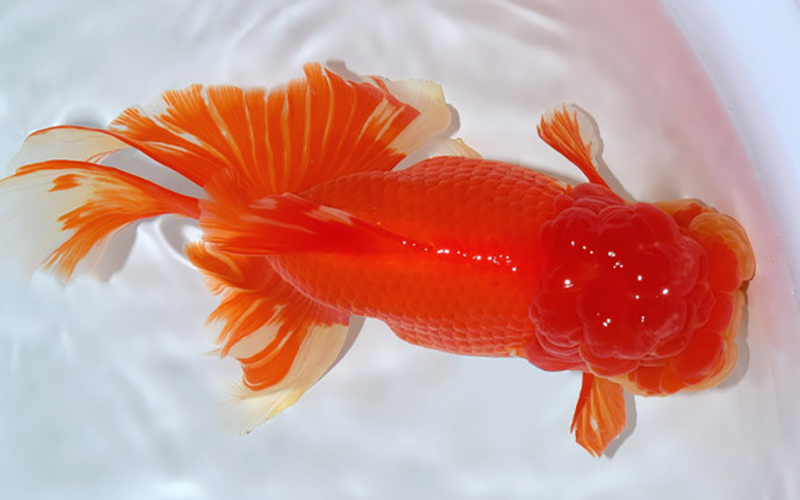
The best way to enjoy Woran lionheads is to look at the fleshy head that develops as it grows and the tail that becomes larger and more beautiful as it grows. If you want to enjoy the balance between the fleshy head and tail fins, it is recommended to put the head in a pot and view it from above (Kamimi). By looking at it from above, you can appreciate the balance of the fleshy bumps and tail fins and whether the left and right sides are evenly aligned. If you would like to enjoy the size and power of the fleshy mass and the beauty of the tail fin that sways from side to side as the Woran lionhead moves, we recommend viewing it from the side (side view) in an aquarium or the like.The Orchid Lionhead is a goldfish that can be enjoyed in a variety of ways, depending on the direction and method of viewing. And as it grows, the points at which it can be enjoyed gradually increase, so once you start keeping it, you will be able to enjoy it for a long time.
When mixing goldfish with other goldfish and other species, there is sometimes uncertainty as to what species is good and what species is not. First,There is no general prohibition against this or that when mixing goldfish with other species.Therefore, depending on the personality and environment of the goldfish you keep, even species that are said to be bad for each other may get along well with each other. However, there is also the matter of compatibility between goldfish. If you put incompatible goldfish together, there is a high possibility that they will fight or that only one of them will monopolize the food. However, as explained in the beginning, there is no prohibition for goldfish to mix with each other, so if you want to mix goldfish, it may be OK. Now, let's take a look at the goldfish that are compatible and incompatible with the Woran lionhead.
The goldfish that are most compatible with the Woran lionhead are Dutch type goldfish such as Azumanishiki (Azuma Nishiki) and Tanchou (Tanchou).The Dutch type goldfish is characterized by the fleshy mass on the head that develops as it grows and the beautiful tail fin that is as beautiful as the Ryukin type, so we recommend that you compare the growth changes of each variety.
Goldfish that are incompatible with the Japanese orchid lionfish are Ranchu-type goldfish such as the Ranchu and Edo Nishiki.Many of the Ranchu-type goldfish are poor swimmers, and if they are mixed with the Orchid Lionhead, the Orchid Lionhead may take the Ranchu-type goldfish's food. If you do mix them with the Ranchu type goldfish, please be careful that the Ranchu type goldfish is able to eat the food.
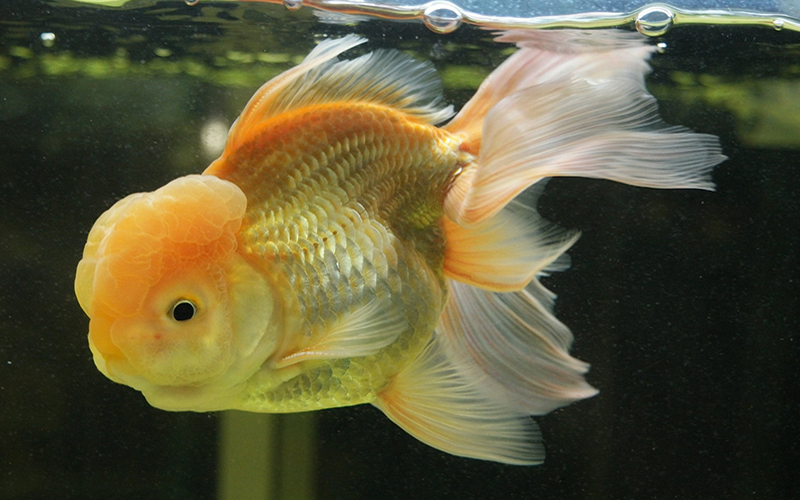
The Woran lion head is,This goldfish is characterized by its head nictitating and caudal fin. If you are thinking of purchasing one in a store, we recommend that you decide on one particular point to go for. There are many points to choose for Woran lionheads, such as the varicose meatus and tail fin. For example, you may be confused when you go to the store, so we recommend that you decide on a particular point, such as purchasing an individual that has a solid mass of flesh or a beautifully open tail fin, so that you will not be confused and you will have less regrets.It is not uncommon to find something different when you buy a Woran lionhead recommended by a shopkeeper and let it swim in your aquarium. If you buy an expensive Woran lionhead, there are individuals with near-perfect flesh and tail fins, but if you buy an inexpensive Woran lionhead, you may find that some parts of it are not perfect. I recommend you to have one particular point. There are many varieties of goldfish derived from the Woran Shishigashira. The Woran Shishito is a variety that can often be seen in stores and can be purchased at a low price among goldfish. If you do your best to raise them, they can live for up to 10 years. The goldfish museum in Yamato Nishikigyoen in Yamato Koriyama, Nara, has a formalin specimen of the Woran Shishito on display. This Woran Shishito is on display because it has a record longevity of 16 years. This goldfish is recommended for beginners as it will live a long life if kept well in this way.
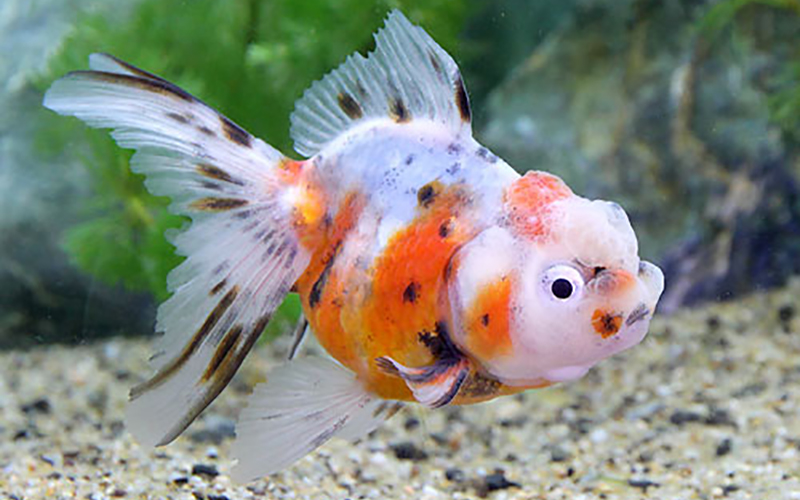
Higashi-Nishiki was fixed by crossing Woran Shishigashira with Sanshoku Demeikin.More information about the characteristics of Azuma Nishiki and how to keep it is explained in the detailed pages below.
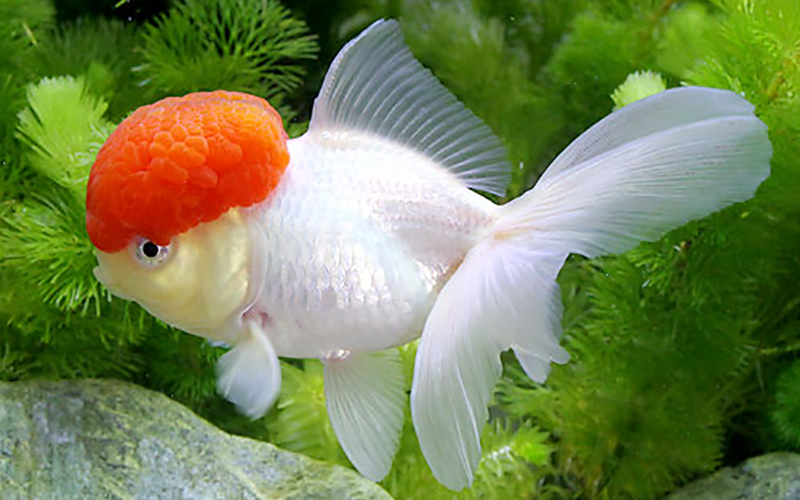
The body shape and other features are not much different from those of the Wolan lion head, but only the head is red and the rest of the body is white in color.More information about the characteristics and how to keep the tannery is provided in the detailed pages below.
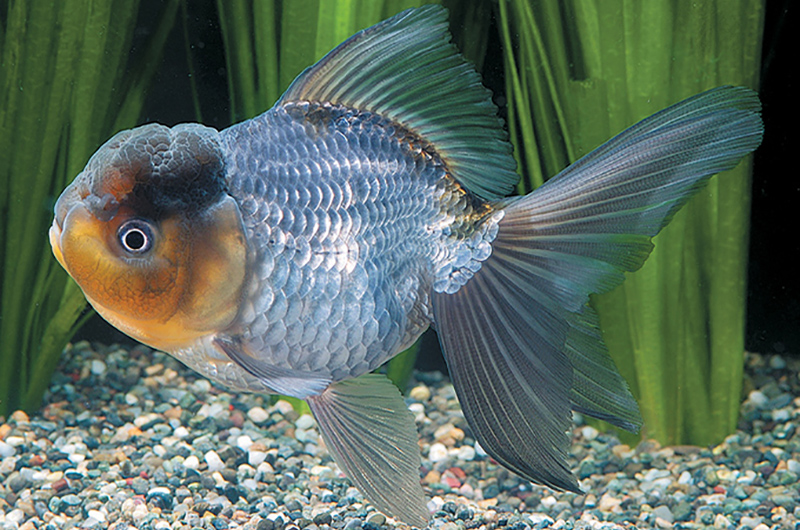
The body shape and other characteristics of the blue-banded lionfish are not much different from those of the Japanese lionfish, but the blue-billed lionfish has a distinctive blue body color.More information about the characteristics of blue-banded fish and how to keep them can be found on the detailed pages below.
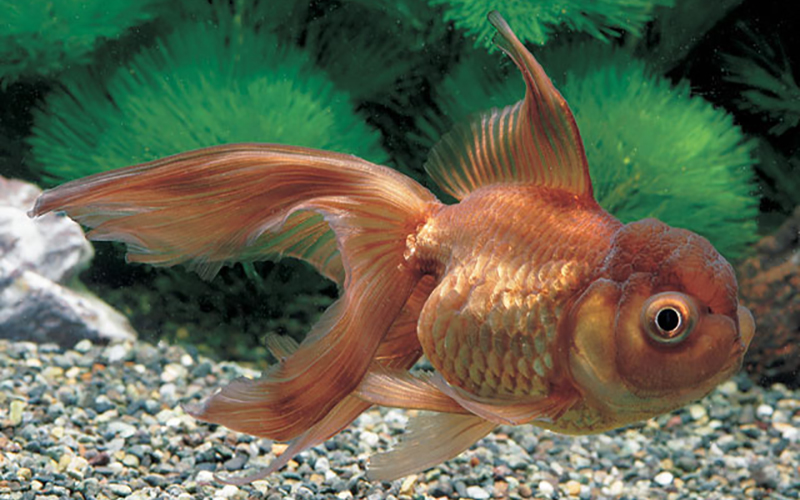
The shape of the body is not much different from that of the Wolan lion head, but the body color of the chakin is reddish brown. Overseas,More information about the characteristics of Chakin and how to keep it is explained in the detailed pages below.